Outer Space & Universe
Outer Space & Universe
Space, also known as outer space, is the near-vacuum between celestial bodies. It is where everything (all of the planets, stars, galaxies and other objects) is found.
On Earth, space begins at the Kármán line (100 km above sea level). This is where Earth's atmosphere is said to stop and outer space begins. This is not a firm boundary but is a convention used by scientists and diplomats.
Items in space are free to move back and forth; up and down; and left and right. These three dimensions are what make 3D space. Items also move forward through time, which is sometimes called the fourth dimension.
The majority of space contains very little matter and so most of it is a vacuum. Scientists do not know how big space is but we do know that space is extremely big, and is always expanding.
According to the big bang theory, all matter and energy in the Universe was compressed into a very small space. Then it exploded and started expanding. Space is still growing in size today; this means the distance from one galaxy to distant galaxies is getting longer.
Gravity is the force that keeps the Moon in orbit around the Earth and the planets in orbit around the Sun. Gravity can stretch and bend space similar to how a heavy ball placed on a stretched sheet of rubber will cause the rubber to stretch. The scientist who discovered that space can bend is named Albert Einstein. How gravity bends space is part of his theory of general relativity.
Astronauts, Cosmonauts, Taikonauts and Spationauts
An astronaut is any person who is trained by NASA to travel and perform tasks in space. Although the space traveler may not necessarily be a United States citizen, each astronaut does go through a rigorous training regiment by the National Aeronautics and Space Administration. Other space travelers go by other names then astronaut depending on their country of origin.
In the United States, astronaut is derived from the Greek words ástron (star) and nautis (sailor). While, in Russia, a space traveler goes by the name космонавт (English: cosmonaut), which is derived from the Greek words kosmos (universe) and nautis (sailor). Westerners call a space traveler from China a taikonaut, based on the 1998 writings of Chiew Lee Yik and Chen Lan where the term tàikōng (great emptiness), Chinese for “space”. In China, the term yuháng yuán (universe navigator) is used for space traveler.
Only the United States of America (United States), Russia (earlier, the Union of Soviet Socialist Republics), and the People’s Republic of China (China) have sent manned spacecraft into space. Other countries have assisted these countries by sending their own space travelers on space missions. For instance, a French space traveler is called a spationaut (from the French word spationaute), which is derived from the Latin spatium (space) and Greek nautis (sailor). (plural in Greek nautes = sailors)
-
00:29

SpaceX Falcon 9 Rocket Sports Re-Usable Tech | Pre-Launch Time-Lapse Video
Added 894 Views / 0 LikesThe Falcon 9 rocket carrying a Dragon capsule bound for the Space Station, was lifted into its vertical position at its Cape Canaveral Air Force Station launch pad. Read more about re-usable tech: http://goo.gl/QUc4zC
-
01:41
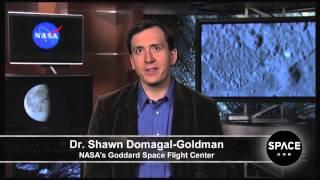
Why The Moon Is Red During A Total Lunar Eclipse | Video
Added 843 Views / 0 LikesNASA planetary scientist Dr.Shawn Domagal-Goldman explains why this phenomenon occurs and also why Earth will experience a tetrad or 4 lunar eclipses in nearly 18 months. Total Lunar Eclipse Skywatching Guide: http://goo.gl/TjZIzU
-
02:03
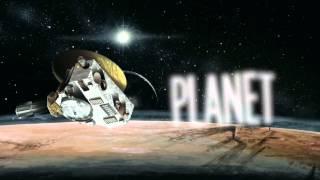
Pluto's Planetary Identity Still In Question | Video
Added 763 Views / 0 LikesMany attendees of the Pluto Science Conference in July 2013 referenced it as a planet. NASA's New Horizon mission, that will deliver the first reconnaissance of Pluto in 2015, will help resolve the long debate.
-
01:00

Moon Turns Blood Red - Lunar Eclipse Time-Lapse Video
Added 1,368 Views / 0 LikesGriffith Observatory in Los Angeles, CA captured this time lapse imagery of the 'Blood Moon' lunar eclipse, from moments before Earth completely blocked the Moon's view of the Sun until full totality when the moon is fully bathed in 'umbral shadow.' Video
-
03:27

Cold War Relic Now Flying Climate Change Study Missions | Video
Added 728 Views / 0 LikesThe large 4 engine turboprop P-3B Orion airplane was built for the Navy in the 1960's. Today it is flying low over glaciers for NASA's Operation Icebridge.
-
00:34
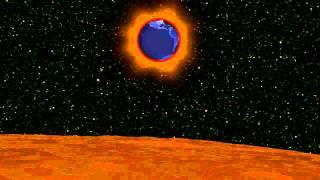
On The Moon For A Lunar Eclipse? | Artist Impression
Added 882 Views / 0 LikesYou would see is a solar eclipse (on the Earth-facing side). A 'Ring of Fire' would circle Earth and a reddish hue would blanket your abode. - Lunar Eclipse From Earth Time-Lapse: http://goo.gl/fBh9Wm
-
20:03

LIGO, A Passion for Understanding | a film by Kai Staats
Added 814 Views / 0 LikesUntil now, we've been deaf to our Universe. We're about to turn on our ears: http://www.space.com/25494-ligo-documentary-watch-live.html More than 900 people are working to achieve what Einstein thought impossible: Detection of gravitational waves from ca
-
02:18
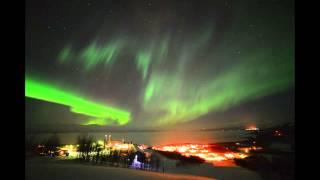
Intense Auroras Groove Over Swedish Mountains In New Video
Added 720 Views / 0 LikesChad Blakley (ligthsoverlapland.com) captured the powerful northern lights dancing in the night sky over several Swedish Lapland locations on Feb 21st, 2014. The final scene contains a small hotel in high altitude Sweden.
-
01:01
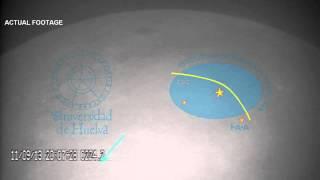
BAM! 38,000 MPH Space Rock Slams Into Moon | Video
Added 826 Views / 0 LikesAn estimated 4 foot-wide, 880 lbs asteroid hit the moon on September 11th, 2013. It had explosive force of 15 tons of TNT. Spanish telescopes that are part of Moon Impacts Detection and Analysis System (MIDAS) recorded the explosion. (looped)
-
03:24
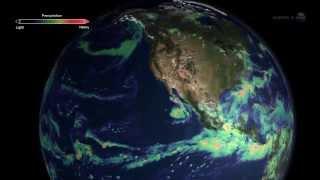
Rain and Snowfall Observation In Real-Time? | Video
Added 759 Views / 0 LikesThe NASA-JAXA Global Precipitation Measurement (GPM) Core Observatory will provide near real-time precipitation coverage around the globe. The data will be used to study climate change, natural hazards and freshwater resources.
-
01:04

Sun Spits Bright Fire In Latest X-Flare Explosion | Video
Added 762 Views / 0 LikesA old Sunspot (now called AR1990, formerly AR1967) has made its way back around to the Earth-facing side of the Sun. It has unleaded a X4.9-class solar flare that ejected a bright glob of plasma on February 24th, 2014 (EST). -- Read more about it here: ht
-
01:13
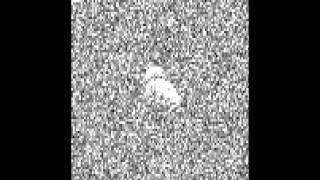
Big 'Peanut' Flies By Earth, NASA Pings It | Video
Added 726 Views / 0 LikesA peanut-shaped 1300 foot-long asteroid, named 2006 DP14, flew about 1.5 million miles away from Earth on February 10th, 2014. NASA scientists used the Deep Space Network antenna at Goldstone, Calif. to take radar images of it on February 11th.
-
01:09
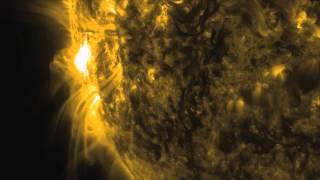
Solar X-Flare Spitfire Seen By Multiple Spacecraft | Video
Added 855 Views / 0 LikesNASA's Solar Dynamics Observatory (SDO) captured close-ups and the Solar and Heliospheric Observatory (SOHO) had the wide view of the Feb. 24th, 2014 X4.9-class flare. Also, SOHO's view provides imagery of the resulting coronal mass ejection (CME).
-
01:07
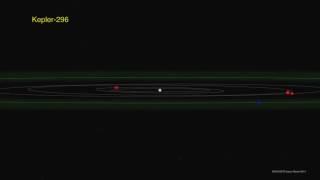
Double Earth-Size Exoplanet Found In System's Habitable Zone | Orbit Animation
Added 978 Views / 0 LikesA star (Kepler 296 system) about half the size of our Sun is harboring at least 5 planets. It is not yet known if the outermost planet, in the habitable zone (green area in video), called Kepler-296f, is a gas or water world.
-
01:22
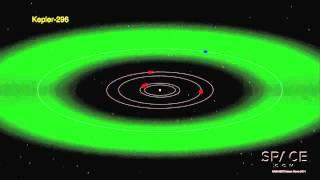
Number of Known Planets Takes A Giant Leap | Video
Added 744 Views / 0 LikesOn Feb. 26th, 2014, NASA announced that it has added 715 new planets to the roster of known exoplanets. Kepler Space Telescope data was used in the discovery. Four of the new planets reside in the habitable zone of its host star.
-
03:30

715 New Worlds: How They Were Found | Video
Added 689 Views / 0 LikesResearchers using the Kepler Space Telescope have nearly doubled the number of planets known to humanity. Find out how they did it.
-
01:55
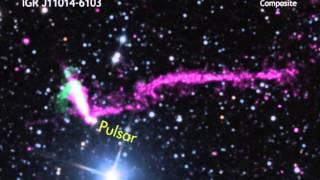
Runaway Pulsar Sports 37 Light-Year-Long Tail | Video
Added 803 Views / 0 LikesThe pulsar jet, called IGR J1104-6103, is traveling between 2.5-5 million MPH, making it one of the fastest moving pulsars ever observed. It began its journey from the center of supernova remnant SNR MSH 11-61A in the Milky Way galaxy, it's believed.
-
03:28
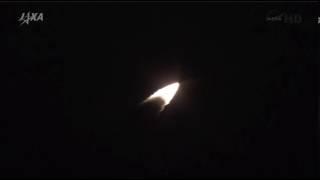
Blast-Off! Precipitation Satellite Launches From Japan | Video
Added 814 Views / 0 LikesThe NASA-JAXA Global Precipitation Measurement Core Observatory (GPM) was launched from the Tanegashima Space Center, Japan on February 27th, 2014. The satellite will provide near real-time precipitation data.
-
06:53

Mars 2021 Human Fly-by - Public or Private $$? Congress Questions | Video
Added 805 Views / 0 LikesCongressman Dana Rohrabacher (R-CA) questions a panel of space and aerospace professionals about the feasibility of the Mars mission at a hearing on Feb. 27th, 2014. Also, why the mission called 'Inspiration Mars' is now looking for public funding.
-
00:42

Dart-Shaped Vehicle Tests NASA's Orion Spacecraft's Parachutes | Video
Added 832 Views / 0 LikesThe vehicle was dropped from a C-17 airplane flying at 35,000 feet. The shape of the vehicle put more stress on the drogue parachutes, to simulate the high speed re-entry of Orion. They also simulated a failure of one of the parachutes.
